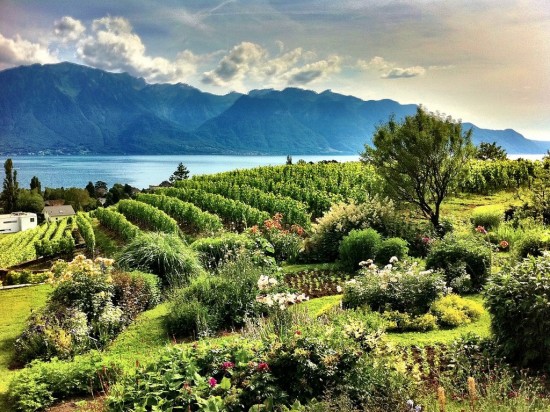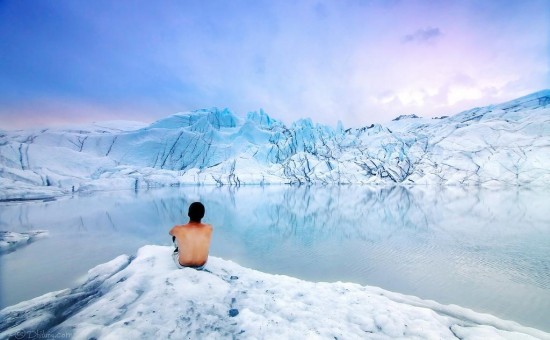Most people have this outdated notion that when it comes to photography, the DSLR camera is the only way to go. But that is just not true. Over the last few years, smartphones have evolved at such an accelerated pace that they have become highly comparable, travel-friendly alternatives to many of the day-to-day electronics and gadgets we use, such as televisions, laptops, and even digital cameras.
The cameras on today’s smartphones, especially those found in the latest iPhone models, have become particularly advanced. They can now take beautiful, professional-looking photos all on their own. Whether you’re taking a photo of your food or capturing stunning landscapes, there’s no doubt that iPhone cameras can give you amazing results.
Here are the eight basic tips for landscape photography for iPhone, Android, and Windows users:
1. Choose the right time of day.
Lighting is crucial in photography, but even more so in landscape photography. After all, no amount of editing and app trickery can fix bad lighting.
To know the best time of day to take photos, expert landscape photographers say that the best lighting usually happens very early in the morning or late in the afternoon when the sun is at a relatively low angle in the sky. However, some compositions may photograph better in bright sunlight or in the nighttime, so do not rigidly limit yourself to any particular time of day.
2. Use a tripod.
Thought tripods were only for DSLR cameras? Think again. Tripods, along with attachment lenses, are among the most essential iPhone accessories every smartphone photographer needs in his or her kit to take great photos. This is because tripods give you maximum camera stability, which means sharper, clearer photos. Tripods are also invaluable when working with long exposures, low light situations, or when doing panoramic stitching.
Don’t know what type of tripod you need? Check out Adorama Learning Center’s tripod buying guide for some helpful tips.
3. Download the right apps.
Despite all of their technological advancements, smartphones still have limited photographic capabilities when compared to powerful DSLR cameras. Luckily, you can easily compensate for your iPhone’s shortcomings by using the right apps.
Netherlands-based landscape and lifestyle photographer Robert-Paul Jansen, who takes spectacular photos with his iPhone, uses apps like Autostitch to help overcome the limitations of the iPhone camera. “This app is used primarily for panoramas but you can also stitch photos together to create any aspect ratio,” he says in an interview with Digital Photography Review. “Make sure you use an app like ProCamera or Camera+ to lock exposure to get a constant result in the final image. And I always make a photo of my thumb or my shoes to mark the beginning and the end of a series of photos which need to be stitched.”
For editing, photographer Todd Lee from Alabama swears by FilterStorm. “Everything I shoot ends up in Filterstorm where it gets all the final treatments,” he explains. “I always use very big, dark vignetting, which certainly helps to draw the eye, but also adds to the feeling of solitude that I try to convey.”
There are many amazing photo editing apps out there that can help you take your photography to the next level. And as most of them are free, all you have to do is download them, experiment with the features, and uninstall if you don’t like them.
Same advice for all the Android lovers out there: experiment with different photography apps and find the one you like best! You may also want to check out Camera Zoom FX, ProCapture, and Pro HDR Camera to help with your photographic pursuits.
4. Learn to use HDR.
Most iPhone users have probably seen that “HDR” function on their cameras before. But do they know how to use it?
HDR, or High Dynamic Range Imaging, is a nifty little function on your iPhone’s camera that is supposed to help you take better-looking photos. It does this by taking not just one photo, but multiple photos of the same scene at varying degrees of exposure. It then combines the best parts of all these photos to produce a beautiful, dramatic image with enhanced shadows and highlights.
 Photo by macounette / CC BY-NC-ND 2.0
Photo by macounette / CC BY-NC-ND 2.0
The HDR function can yield amazing results, particularly when it comes to landscape photography. Such photos are usually tricky to photograph, as there is a lot of contrast between the sky and the land. This makes it difficult to capture all the details without making the sky too overexposed and the land too washed out, or vice versa. With HDR, you can get just the right amount of exposure for all areas of your image. It is a great tool for any type of photography, but a particularly helpful one for landscape photographers.
5. Try to have a single point of interest.
Photographic compositions are subjective, but in most cases, the most attractive and effective type of landscape photo is one that has a single point of interest amid a beautiful landscape backdrop. That said, do not make the mistake of having too many things going on in your photo. There should only be one element in your composition that can immediately draw the viewer’s eye, and the rest should be part of the backdrop. Having too many points of interest in one photo can be distracting.
6. Always remember the Rule of Thirds.
If you are any kind of photography buff, then you must have heard of the Rule of Thirds. If you haven’t, it is a tried-and-true composition technique that many photographers dutifully follow when taking pictures. The technique is particularly useful for landscape photographers, as shooting large, expansive landscapes can yield bland results if they do not use certain composition techniques to make the landscape appear more interesting.
On the other hand, you should also remember that rules are made to be broken. The mark of a true photographer is not just in taking a great photo regardless of the equipment used, but also in knowing when to follow the rules…and when to break them.
7. Add a human element.
 Photo by Dhilung Kirat / CC BY-NC 2.0
Photo by Dhilung Kirat / CC BY-NC 2.0
Landscape photography is not limited to photographing mountains, oceans, and forests. You can add architecture, wildlife, and yes, even humans. Adding a human element can breathe some life and excitement into your photos, otherwise, it’s just a beautiful scene. A postcard, if you will. On their own, landscapes are inherently stunning. But when you see a person incorporated in that stunning scene, it makes the image more believable. It adds interest, drama, and oftentimes, context.
8. Get creative and experiment.
The great thing about using your iPhone to take landscape photos is that you have unlimited access to hundreds of apps that can really help you let your creativity run wild. So, go ahead, get creative! Experiment with different compositions, different angles, different editing techniques, and more.
*****
Don’t stop learning, experimenting, and taking photos. After all, the only way to become a better landscape photographer (with an iPhone) is to just go out there and do it!